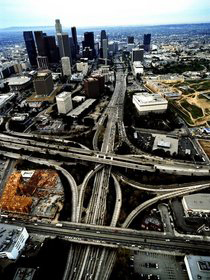|
Near the end of the 1990's, the urban and rural distribution drastically changed. Way over half of the world's population
lived in citied areas, and mind you, this all happened too quickly. In fact, it happened so fast, homes could not be built
fast enough to shelter the growing population.
Mega City is defined as "A very large urban complex having several million people or more." Meaning 8-10 million citizins
live there.
Improved Food Availability
One major factor appointing the biggest size of an urban area is their availability of food. More traditional methods of this
transportation and food preservation excluded long distance travels with the food, but include flights.
Movement of Jobs
The majority of people living on the earth have worked on land, producing items such as food. New factories started building
up after the Insudtrial Revolution, and most rural people moved to the urban areas to look for work. After the Industrial
Revolution occured it left many farm labourers out of work, and without market's for their products, the "craftspeople" had
to relocate to the city to look for work.
Elimination of Health Risks
When people live close to eachother, it raises the disease factors higher. Thousands of people had died from diseases such
as cholera, tuberculosis, and bubonic plague. After the Industrial Revolution the citie's government began to make
their sewage handling methods and garbage disposals more carefully, increasing the water saftey. While the deaths decreased,
the population increased.
Development of Mega-Cities
Over 300 cities share a population of over 1 million, since the beginning of the 21st century. Most of the Mega Cities are
forming in the less developed countries.
|
 |
|
|
|
 |
|

Mass Transit
Before the Industrial Revolution occured, the prolonged travel time that the people could travel stopped the size of the city.
Most people had to find another method of transportation like walking or ride a horse. This being an issue, they would move
closer to their work place. While the development of mass transit took place, it let the people live further away from their
work place. Because of this, the cities boundaries expanded greatly, with more space in the city, leaving room for more people.
A Massive Shift
When most of the people moved to the city, it impacted the world greatly. 95% of the characteristics of our lives changed.
Including economic, educational, transportation, political, cultural, and enviromental concerns. It's just a matter of whether
or not the city will benefit from it.
Push Factor
"A characteristic of a place that causes people leave." Basically means something that pushes you away from a country, or
place. I.e. Lack of work or flooding.
Pull Factor
"A characteristic of a place that attracts people." Basically means something that pulls you to a a country, or place. I.e.
Jobs, or scenery.
|
 |
|
|
|

